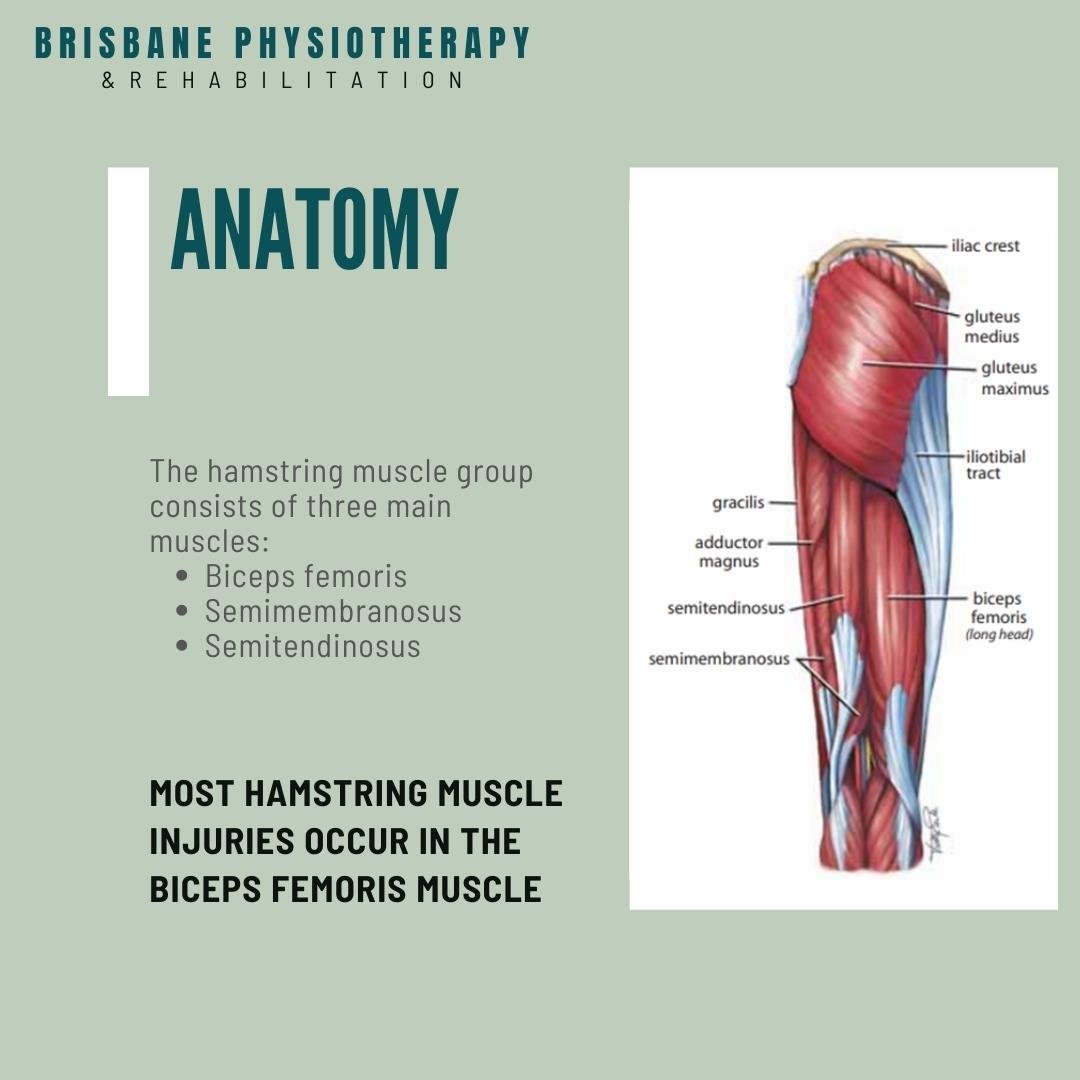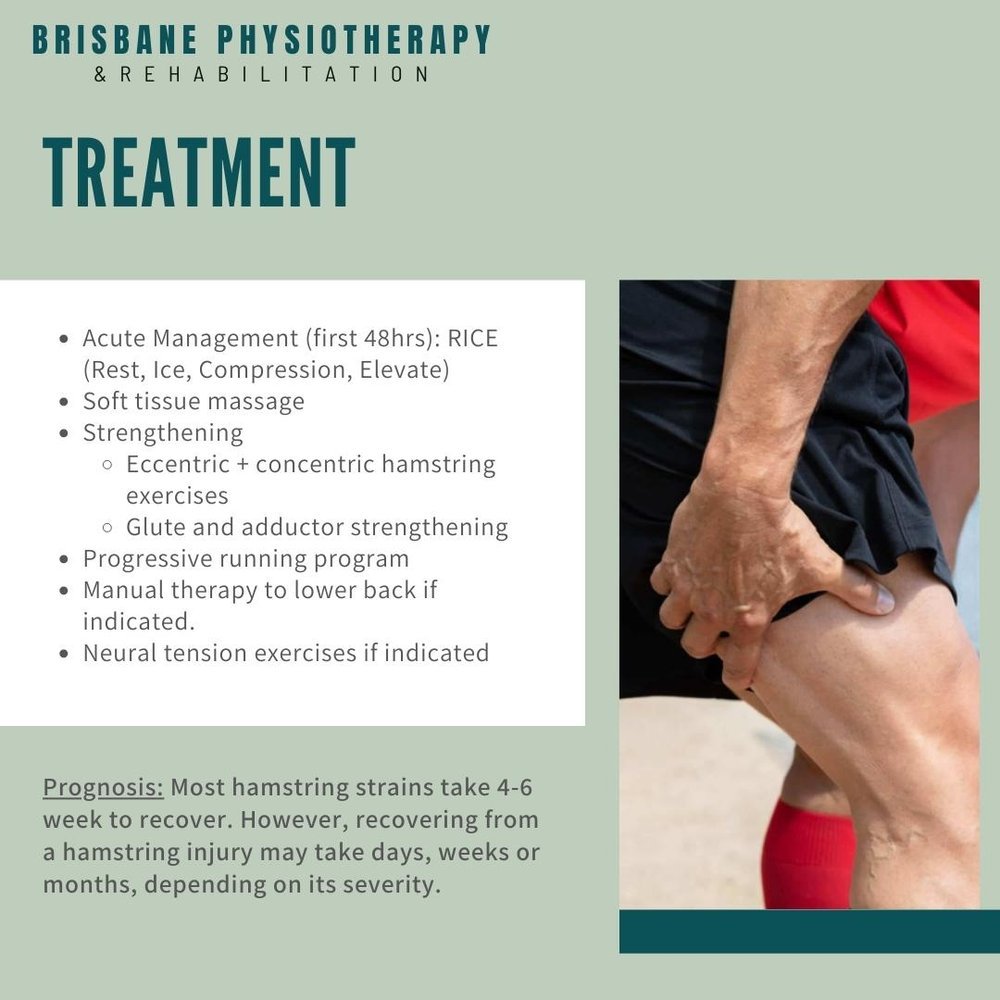Hamstring Strains & Treatment
Overview of Hamstring Strains
Description
A strain to a large muscle group such as the hamstrings is the result of a substantial force during contraction or a violent stretch which causes mechanical stress. This results in varying degrees of rupture within the fibres of the muscle.
They are usually a non-contact injury and mostly occur during sprinting where quick eccentric contractions are regular.
Hamstring muscle injuries are a common injury in sports that involve high-speed running and kicking and affects mainly sprinters, hurdlers, long jumpers, footballers and field hockey players.
Epidemiology
They make up 15% of all injuries in AFL and 12% of all injuries in English football.
They also have the highest recurrence rate of all injuries with a recurrence rate of 34% in AFL and 12% in English football.
Anatomy
The hamstring muscle group consists of three main muscles: biceps femoris, semimembranosus and semitendinosus. Most hamstring muscle injuries occur in the biceps femoris muscle.
Presentation
Sudden onset
Moderately severe pain with localized tenderness
Disabling - difficulty walking, unable to run
Decreased length of the hamstring muscle
Reduced strength against resistance
Local bruising
Grades of Muscle Strain
Severity:
Grade 0 - Muscle abnormality without evidence of pathology on imaging (Clinical syndrome)
Grade 1 - Disruption of some muscle fibres / small tear
Pain during or after activity
May be pain on contraction, but no/minimal loss of strength
Grade 2 - Moderate tear to muscle
Pain during activity which requires athlete to stop activity
Pain on contraction and detectable weakness
Grade 3 - Extensive tear of muscle
Sudden onset of pain and may fall to ground
Significantly reduced ROM, pain on walking, obvious weakness
Grade 4 - Complete tear to muscle or tendon
Sudden and onset of pain and significant / immediate limitation to activity
Palpable gap, less pain on contraction than grade 3 injury
Anatomical site:
“a” Myofascial injury
Peripheral aspect of muscle
“b Injury within muscle belly
Most common at muscle tendon junction
“c” Injury extends into tendon
Or involves the central tendon of that muscle and generally these C type injuries have poorer prognosis, and that’s because the tendinous structures have a slower healing rate
Predisposing factors
Intrinsic (personal-related)
Age: increasing age is a risk factor for hamstring injury. This relationship may be due to decreased strength and an age-related reduction in muscle fiber size and number.
Previous injury: past history of injury is associated with reduced strength.
Flexibility: prospective studies have shown either a significant association between pre-season hamstring muscle tightness and subsequent development of a hamstring muscle injury or a tendency towards a statistical relationship.
Strength: low hamstring strength has been shown to be a significant predictor of hamstring muscle strain injury.
Extrinsic factors (environmental-related)
Warm-up: muscle strain injuries, in general, are more likely to occur without adequate warm-up
Fatigue: fatigued muscles are able to absorb less energy. Hamstring injuries are more common at the end of matches and training sessions.
Fitness level: Inadequate pre-season training resulting in low fi tness levels may contribute to an increased hamstring injury rate.
Training modalities: Too much emphasis on aerobic training instead of more high-intensity running/acceleration drills has been suggested as a causative factor. Abrupt increases in training volume and intensity may also contribute to injury risk.
Hamstring Strain Treatment
Treatment
Acute Management (first 48hrs): RICE (Rest, Ice, Compression, Elevate) and pain free seated active knee extension.
Soft tissue massage – hamstring and glute muscles.
Strengthening:
Eccentric + concentric hamstring exercises – eccentric strength is particularly important in recovery and prevention of recurrence of hamstring strains.
Glute and adductor strengthening
Progressive running program
Manual therapy to lower back if indicated.
Neural tension exercises if indicated
Prognosis
Most hamstring strains take 4-6 week to recover. However, recovering from a hamstring injury may take days, weeks or months, depending on its severity.



